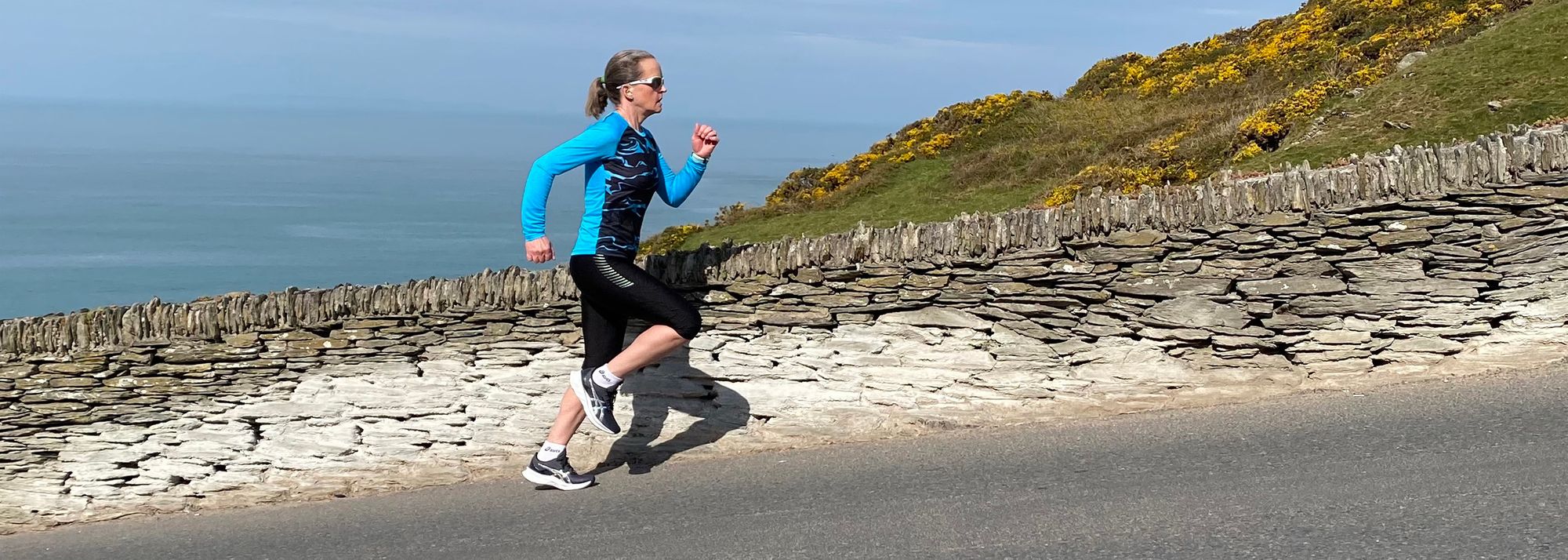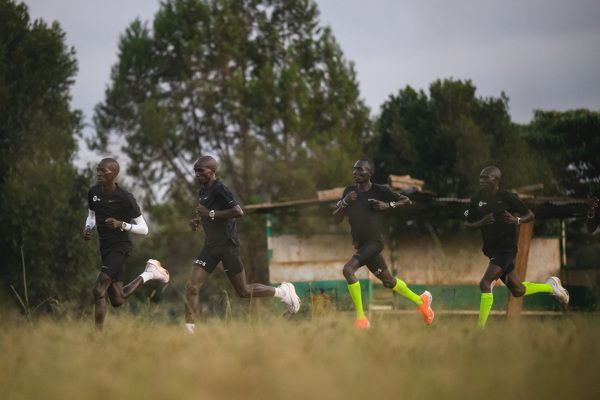Hill running
 Running hills is my favourite form of speed training. You can reach a high intensity of effort without having to run as fast as you would on flat terrain.
Running hills is my favourite form of speed training. You can reach a high intensity of effort without having to run as fast as you would on flat terrain.
Hills bring variety to training because no two hills are the same. They provide a cardiovascular workout, but also improve your leg strength… and you can run freely without the pressure of time splits or distance covered. There is a lot going for them!
But what is the best form of hill training? The most obvious workout is hill repetitions – running fast uphill and then slowly downhill, while you recover for the next uphill effort. This is an excellent type of hill training. You can vary the length, gradient and number of repetitions as you wish.
The type of terrain can be mixed up too. Hills on a road with a relatively low gradient enable you to run fast, but hills on grass during a wet, muddy winter will be a very different type of challenge!

Hill running (© Mark Clinton Johnson)
Because I love hills, I tried to incorporate them into my training in a number of different ways. Here are a few examples you could try.
1 Hills in steady running
I always used to incorporate hills into my easy training runs. When I lived on Tokyo’s Tamagawa river which was completely flat, I made a point of running to a nearby neighbourhood which had a hill, and running a few laps of it to incorporate the hill several times. Regularly including hills in your routine will provide extra training stimulus, which completely flat running would lack.
2 Short hill sprints
Performing about five maximum effort sprints on a steep hill for about 10 seconds provides a short, sharp training stimulus without the total amount of work being too great. A leisurely walk back down ensures a good recovery. At least once a week, I included this in my steady running so it was not a stand-alone quality workout but just a little extra.
3 Hill circuits
Uphill repetitions usually call for running up and down on the same course. But finding a loop course which includes a hill is a terrific alternative. While running continuous laps, you can vary how you use the loop. For example, you could run hard uphill, practice accelerating off the top of the hill, hone your downhill technique, or even run fast the whole way round and make it into a hilly tempo run.
4 Uphill repetitions with variations
There are several ways you can modify uphill intervals. For example: a) find a spot where there is more than one hill. Perform one set (eg four hills) on one hill, then move to another hill and run a second set there; b) vary your pace: with my club, Harrow AC, I used to run a very long hill in two bursts with a brief section of easy running halfway up; c) include a set of uphill efforts in a fartlek session which might also include eg short sprints, intervals of a few minutes in length, or strength exercises eg squat jumps.
5 Uphill runs
If you live in the mountains or somewhere suitable, continuous uphill runs are a brilliant form of hill training. The Bernina Pass near St Moritz in Switzerland and Albuquerque in New Mexico in the USA were my favourite locations for these runs. Lasting between 10km and 25km, I would start at the lowest point and run continuously uphill, either as a steady run or a tempo workout. A treadmill could be used to replicate these but I always prefer outdoors with beautiful scenery!

Hill running (© Mark Clinton Johnson)
Of course, running downhill is also important. In a race, you can make big gains on your rivals by running fast downhill. In trail, mountain and fell races, being able to run downhill fast and safely is essential, and requires technical skill. As with uphill repetitions, try varying the length, gradient and terrain when practising running downhill.
Greek athlete and orthopaedic surgeon Dimos Evangelidis has won multiple medals at the Greek Marathon Championships, which is held on the notoriously hilly Athens ‘Authentic’ Marathon course. He frequently uses downhill training, and explains why it is helpful: “Downhill running can strengthen leg and core muscles by getting them to work eccentrically (what the muscles do when they resist being lengthened, as they do when landing). It also increases running economy by training the athlete to reduce ground contact time.”
He incorporates hill sessions three to four times within a six-week period, and uses hilly courses for his steady running. He runs sessions which include uphill and downhill repetitions, for example: 8-12 x 200+200m (uphill/downhill), or 6-8 x 500+500m, and even up to 4-6 x 750+750m, with 90 seconds rest in between. He has a word of caution about downhill running, though: “Downhill running can sometimes cause injuries such as tendinopathies, anterior knee pain, ITB syndrome, shin splints and stress fractures. Runners should only incorporate downhill running after a few sessions of just uphill running, and ideally having done regular resistance training during the previous months. Start with fewer reps and shorter distances.”
Hills offer so much variety and tick many boxes in terms of providing a stimulus to improvement. I hope I have whetted your appetite for trying different ways of using hills in your training. They will always be my favourite form of speed training!
Mara Yamauchi for World Athletics Be Active











